
Everything About Psilocybe Cubensis
Magic mushrooms are wildly popular, and science is showing us that not only do they have a good safety profile, but may even come with a slew of benefits. Keep reading to find out all about them.
Magic mushrooms are either revered and famous or feared and infamous, depending on who you ask. However, the term "Magic mushroom" is very broad, encapsulating hundreds of different species of psilocybin-containing mushrooms. If you've ever grown or bought magic mushrooms, chances are they were a strain of Psilocybe cubensis. This species is very widespread and easy to cultivate, making it potentially the most popular magic mushroom in the world.
What are Psilocybe cubensis mushrooms?

Psilocybe cubensis is the most widespread species of magic mushroom (aka shrooms) on the planet. It can be found in North, Central, and South America, South Asia, and Australia. Growing naturally on mainly bovine dung, it is an impressively diverse species.
In the world of domestic cultivation, this variety increases dramatically. There are now potentially dozens of selectively bred strains, each displaying a unique shape, size, colouration, and effects.
The active ingredient in Psilocybe cubensis is psilocybin, hence the name. In fact, all species of magic mushroom fall into the Psilocybe genus. Their psychoactive power is what, at least to us, defines them. Psilocybin has the chemical structure 4-PO-HO-DMT. The dimethyltryptamine (DMT) at the end causes it to interface with the brain's serotonin receptors, causing what many refer to as 'tripping'. It shares this with most hallucinogens, which primarily influence serotonin production.
What do Psilocybe cubensis look like?
Cubensis can vary in appearance because there are so many varieties. Nevertheless, each shares commonalities, and once you've seen enough of them, you'll be able to tell a cubensis when you see it. Below, we look at the different parts of these fungi's anatomy to better understand how they look.
Cap

Psilocybe cubensis caps begin life as a conical shape and flatten out as they mature. Ranging from 1.5–8cm, they can display significant variety in size. Moreover, several factors can influence size, from genetics to environment. Even magic mushrooms within the same strain vary dramatically in size.
Each strain will have similarities, though. Some have larger caps and smaller stems, giving them a short and fat appearance, while others tend to tower upwards but develop smaller caps.
In terms of colouration, the caps begin with a reddish hue and typically lighten to a more golden colour as they age. Like most parts of a Psilocybe mushroom, the cap can bruise, turning blue (more on this later).
Gills

The gills are the part of a mushroom from which spores are released. Spores are used for fertilisation and can be thought of similarly to a plant producing seeds. Interestingly, mushrooms are asexual, and if conditions are right, they will cause hyphae to grow from the ground, mate, and give rise to a new mushroom.
Gills begin life with a pale colouration and darken once they release spores. Before spores are released, something known as a "veil", which covers the gills, detaches from the cap and "drops" when the mushroom reaches maturity. Spores are then released, and the gills darken.
With immature shrooms, you won't be able to properly see the gills as the veil membrane will cover them. As the stems grow and the caps expand, this membrane will stretch downwards until it begins to tear, and then you will be able to see the gills.
Stem
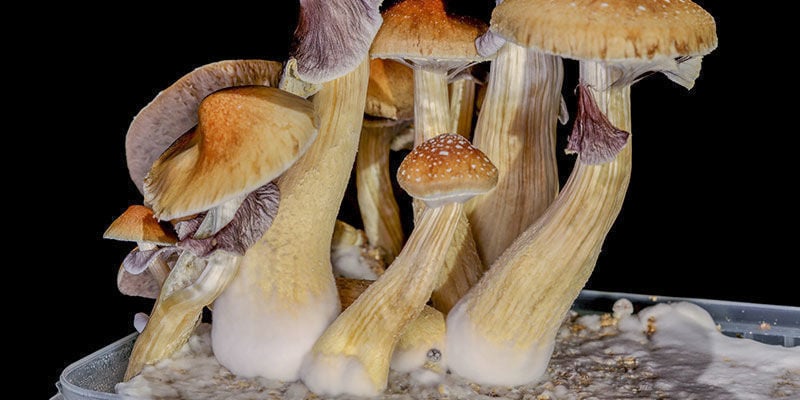
Mature stems tend to be 4–15cm long and 0.5–1.5cm thick. They are often white and can turn a light yellow colour. However, they are one of the first body parts to show blue bruising. In domestic cultivation, mycelium (the white subterranean mould from which mushrooms grow) may develop as a fine, white, cotton-like fuzz on the base of the stem. Once the veil has dropped, it will remain clinging onto the stem around ¾ of the way up.
Different strains

As mentioned, there are many different cubensis strains, each with its own characteristics. For instance, the strain Albino A+ is just that—albino. With no pigment, it appears a ghostly white. And Penis Envy, one of the strongest known strains of cubensis, has a decidedly phallic appearance, while being even more challenging to grow than others. However, if you're going to buy magic mushrooms or spores, getting your hands on some Penis Envy is a good choice, as they are famously strong and trippy.
Cultivating Psilocybe cubensis
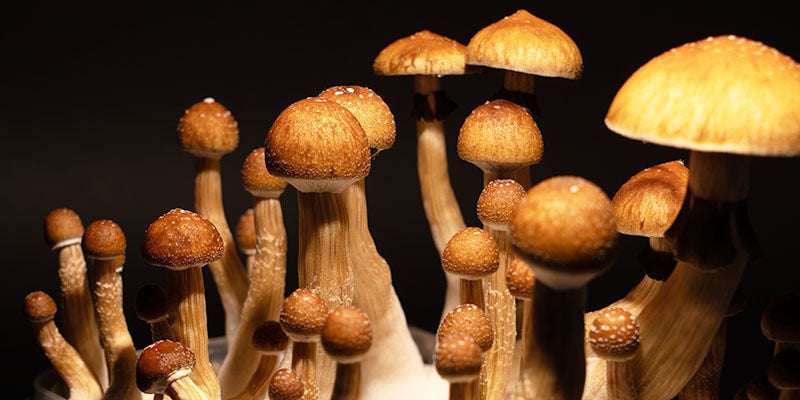
As mentioned, Psilocybe cubensis shrooms are revered for their ease of cultivation, which is why if you buy magic mushrooms, they're almost definitely going to be a strain of cubensis. Outdoors, they grow around the world in warm, humid environments where they can get their hyphae into nutrient-rich dung.
Indoors, they prove robust, resilient, and at home in many different environments, making them easy to cultivate. While their natural substrate is dung, they can grow on a number of host environments: grain, straw, cardboard, and coco coir, to name a few. You can even grow Psilocybe cubensis mycelium suspended in water—a process known as liquid culture.
Not only does Psilocybe cubensis grow well, but it doesn't mind being transported. If you don't fancy dedicating space to the cultivation of fungi, you can order pre-colonised grow kits that will start fruiting immediately! Buying magic mushroom grow kits is the easiest and most reliable means to cultivate these shrooms at home, and it's probably the best choice for most people.
Of course, if you're up for the challenge, growing from scratch can be a great choice, but kits are very popular and can offer a huge flush in weeks.
Why do magic mushrooms turn blue?
Magic mushrooms turn blue because of a cascade reaction, beginning with psilocybin. This blue, similar to indigo, is the result of psilocybin oxidation. To see this phenomenon in its full glory, consider trying the lemon tek method, submerging your mushrooms and leaving them out in the open for a little bit. Eventually, the solution will turn a vibrant blue colour. But make sure you drink it quickly, as blue indicates that psilocybin is breaking down into its constituent parts!
Are Psilocybe cubensis potent?
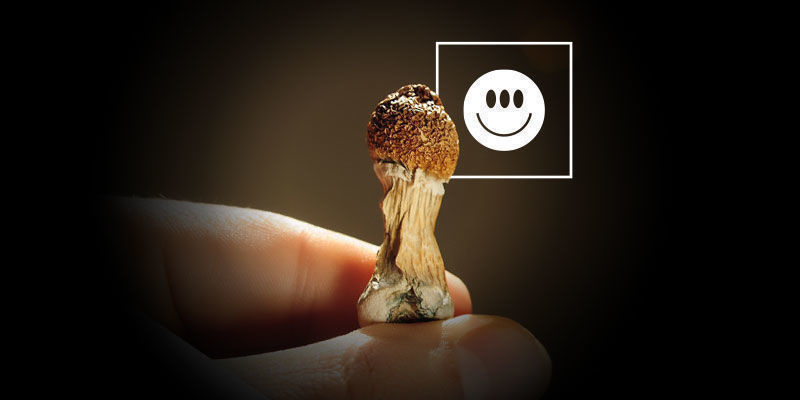
It depends! Strains bred indoors are always reasonably potent, with between one and two grams enough to produce a moderately strong trip. There are a few outliers, though, such as Penis Envy and McKennai which are far stronger than the likes of Golden Teacher, for example. However, substrate and growing conditions also influence potency, so it's not just the strain that matters.
In the wild, Psilocybe cubensis potency can vary significantly, while cultivated mushrooms tend to be more similar to one another. Mushroom potency is usually measured according to the concentration of two compounds: psilocin and psilocybin. When consumed, the human body converts psilocybin to psilocin.
In wild mushrooms, factors such as ultraviolet radiation and the nutrient content of the dung are thought to be some of the leading factors responsible for potency. This does help explain why indoor mushrooms tend to display less variation and are generally more potent. Their UV exposure is likely minimal, and their substrate will be nutrient-rich and carefully managed.
It's also worth noting that smaller mushrooms from a colony will contain a higher gram-for-gram concentration of psilocybin compared to larger mushrooms. So, ten grams of small mushrooms is stronger than ten grams of larger mushrooms.
Psilocybe cubensis usage

Magic mushrooms can make for a great time. However, the psychedelic experience is, for many, much more meaningful than just a little fun. In fact, even among those who take mushrooms for purely recreational purposes, it's rare that you'll come away without feeling something quite profound has happened. So it's no wonder they have been used for thousands of years, across many different cultures, for religious and ceremonial purposes.
In today's modern world, Psilocybe cubensis is being investigated for its potential medical and therapeutic uses. Psilocybe cubensis is most commonly consumed by eating dry specimens, but you can also consume them fresh. Otherwise, you can make lemon tek or tea, which can help the effects come on faster and ease stomach issues and nausea.
What are the effects of consuming Psilocybe cubensis?

Given the range of potential applications, the effects of Psilocybe cubensis can be very powerful and profound. At low doses, they cause a warping of reality that affects all the senses. As the dose increases, this can turn into a full-blown psychedelic trip.
While complete hallucinations and detachment from reality are rare with cubensis—as they are with most psychedelics—they are still capable of inducing powerful experiences that change the user's relationship with reality.
Effects include:
- Visual: Warping, objects appear to breathe, saturation of colours, tracers, patterns, increased sense of visual clarity.
- Auditory: Sounds will be enhanced, but it may be difficult to tell where sounds are coming from, and tracking sounds (such as speech) can be difficult.
- Mental: Deeper thoughts during the earlier part of the trip and at higher doses, emotional clarity and insight.
Due to their power, it is crucial you treat these mushrooms with respect. While they tend to be one of the more affectionate psychedelics, in the sense that the high is often pleasurable, if a user embarks upon a psychedelic mushroom journey without showing proper respect, it can still turn sour. That being said, bad trips on mushrooms tend to be far milder and shorter than on other psychedelics, such as LSD.
When taking any psychedelic, ensure that you are in an appropriate setting and have a good mindset. That is, make sure your mind is positive and calm, and your environment is comfortable and familiar. Otherwise, it will just turn into a battle of wills, and more than likely, the mushrooms will win!
Are they safe?
Magic mushrooms are considered to have a good safety profile despite their draconian legal status in many countries. Moreover, they don't seem to have the ability to cause addiction or dependence.
Whilst shrooms are not believed to have any adverse physical effects, they can, of course, negatively affect the mind. It is not known whether they can trigger certain mental health conditions, but a bad trip can still be traumatic (although they're really quite rare). And, whilst most users will make responsible decisions whilst tripping, it is possible to be disinhibited by these drugs. As such, you should remain in a safe environment.
Shrooms also have a range of side effects, including:
- Nausea
- Increased heart rate
- Sweaty palms
- Fear
- Panic
- Racing thoughts
- Confusion
The legality of Psilocybe cubensis
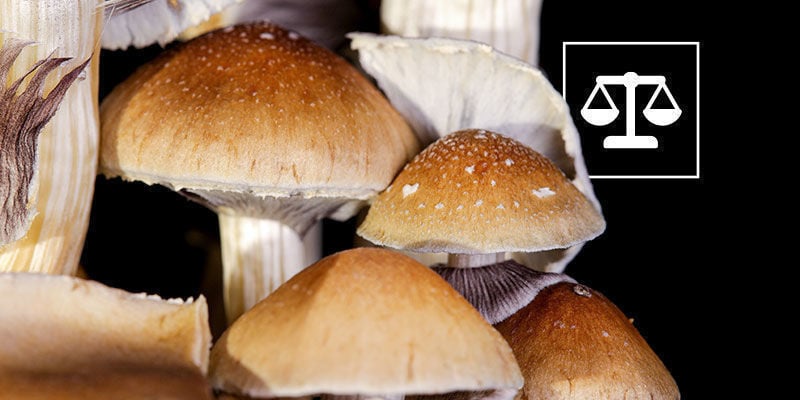
Magic mushroom legality varies from country to country. According to certain laws, mushrooms are categorised into constituent parts:
- Mushroom (fruiting body)
- Mycelium
- Spores
In some countries, the law treats these parts differently. For instance, spores and mycelium (and truffles) might be legal—which is why it is okay to sell mushroom grow kits—but the mushroom fruiting bodies themselves could be illegal. So, before purchasing, growing, or picking, check your country's laws!
Psilocybe cubensis: Nature’s gift

Psilocybe cubensis mushrooms are incredible organisms. Despite the modern world's fear of psychedelics (a view that is now receding), magic mushrooms have been loved for much of human history. And now, many scientific discoveries and initiatives support this ancient adoration.
Nevertheless, anybody wishing to take such a powerful substance should always be cautious and respectful. Overdo it, and you might develop a lifelong fear of shrooms. Tread carefully, and you may have a loving companion for the rest of your life.
Psilocybe cubensis: Questions and answers

Here are some commonly asked questions regarding shrooms:
Q: What are Psilocybe cubensis mushrooms?
A: Psilocybe cubensis mushrooms are a species of magic mushroom that contains the psychedelic compounds psilocybin and psilocin. There are many different varieties or strains within this species.
Q: What do Psilocybe cubensis look like?
A: They tend to have stems between 4 and 20cm, with wide, golden caps (once mature). However, appearance can vary between different strains.
Q: How do you consume Psilocybe cubensis mushrooms?
A: You can eat dry or fresh shrooms. You can also brew a psilocybin tea or convert the psilocybin into psilocin outside the body by using lemon, known as a lemon tek.
Q: What are the effects of Psilocybe cubensis?
A: They have psychedelic properties which change and enhance the world and change thought patterns. They rarely cause genuine hallucinations.
Q: Are Psilocybe cubensis safe?
A: Yes, they are appear to have a good safety profile, and lack the ability to cause addiction or dependance.
-
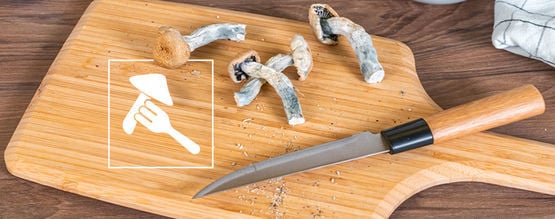 6 min
June 18, 2024
The 5 Best Ways To Consume Magic Truffles And Mushrooms
Consuming shrooms doesn't have to be a nauseating experience. Enjoy that psychedelic trip, courtesy of our five best methods for consumption.
6 min
June 18, 2024
The 5 Best Ways To Consume Magic Truffles And Mushrooms
Consuming shrooms doesn't have to be a nauseating experience. Enjoy that psychedelic trip, courtesy of our five best methods for consumption.
-
 7 min
September 17, 2021
What Are The Strongest Magic Mushroom Species?
You've probably heard of cubensis and liberty caps, what about Psilocybe azurescens or Panaeolus cyanescens? And did you know there are over 200 species of psilocybin-containing magic mushrooms in...
7 min
September 17, 2021
What Are The Strongest Magic Mushroom Species?
You've probably heard of cubensis and liberty caps, what about Psilocybe azurescens or Panaeolus cyanescens? And did you know there are over 200 species of psilocybin-containing magic mushrooms in...
-
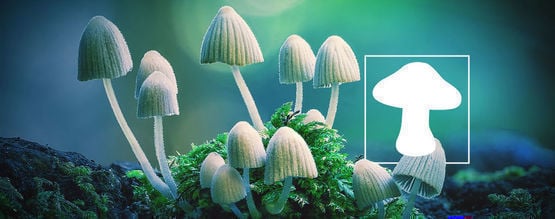 10 min
June 13, 2019
A Detailed Look At Magic Mushroom History
10 min
June 13, 2019
A Detailed Look At Magic Mushroom History
-
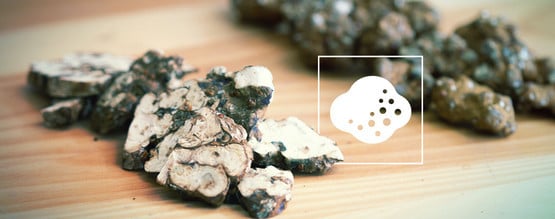 2 min
June 13, 2019
How Do Magic Truffles Work?
2 min
June 13, 2019
How Do Magic Truffles Work?











 United States
United States








